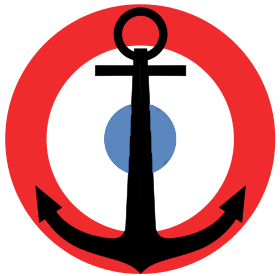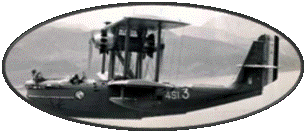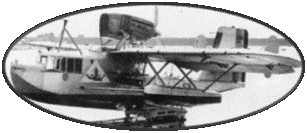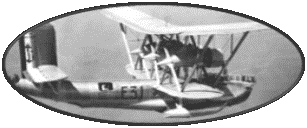At the end of the 1930s,
the Dutch Naval Aviation launched a call for tenders to acquire
a Reconnaissance, Bombardier or Torpedo seaplane that could be used
in Europe or in the Dutch East Indies. The manufacturer Fokker presents
a twin engine with two large floats. The new aircraft, of mixed
metal and wood construction, is a monoplane with median wings that
can carry 3 men. It is powered by two Wright Whirlwind R-975 E3
of 450 hp each, driving a two-bladed propeller. Under the designation
Fokker T-VIII, two prototypes made their first flights in 1938.
The results of the tests are satisfactory, and the Navy orders the
new aircraft which is launched in series in 3 separate versions,
linked to the construction method.
Fokker T.VIII-W / G: Wood
fuselage in the central part and steel for the front part. The empennages
are designed around a canvas tubular structure. The wings coated
with plywood, have 2 metal rails and bakelite ribs.
Fokker T.VIII-W / M was made
entirely of aluminum alloy
Fokker T.VIII-W / C, mixed
construction aircraft, planned to be exported to Finland, it presented
notable differences compared to the initial version: the fuselage
was lengthened by 1.83m and the wing area was increased by 8m²
per l extension of the wingspan (+ 2m). Its engine was more powerful.
A first batch of 5 aircraft
will be delivered in June 1939. This initial series made it possible
to confirm the interest of the machine, and 30 copies were ordered,
distributed in 19 Fooker W / G, 14 Fokker W / M, 2 Fokker W / C
and a Fokker L (Wheel version ordered by Finland). These aircraft
were intended to replace the old Fokker T-IV used in the Dutch East
Indies
In May 1940, when the Germans
invaded Holland, part of the production of the Fokker T-VIII was
being assembled. By order of the Germans, the remaining copies will
be completed and integrated into the Luftwaffe, in the bases of
the North Sea. They will be used for sea rescue, anti-submarine
warfare or reconnaissance. Some Fokker T-VIII will be sent by the
Dutch to the North of France. To avoid capture, the Dutch Navy ordered
the transfer of 8 of them to England. They will be integrated for
a few months within Squadron 320 of the RAF based in South Wales.
These aircraft, registered from AV958 to AV965 will be used for
patrols over the Atlantic. They will be used until all spare parts
are used up.









